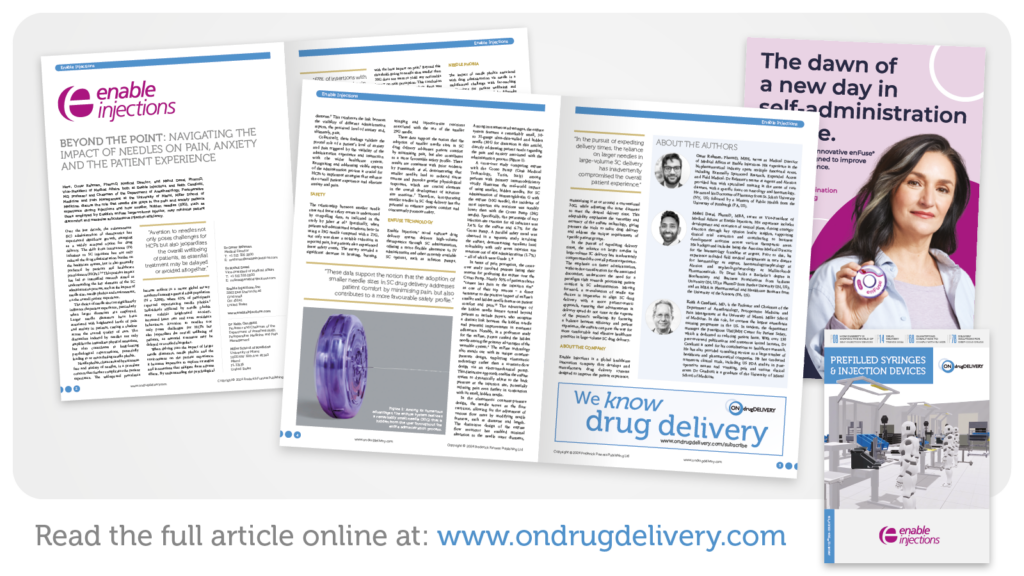
Beyond the Point: Navigating the Impact of Needles on Pain, Anxiety, and the Patient Experience
From ONdrugDelivery January 2023:
Over the last decade, the subcutaneous (SC) administration of therapeutics has experienced significant growth, emerging as a widely accepted option for drug delivery. The shift from intravenous (IV) infusions to SC injections has not only reduced the drug administration burden on the healthcare system, but is also generally preferred by patients and healthcare practitioners (HCPs).1–4 This positive impact has led to intensified research aimed at understanding the key elements of the SC administration process, such as the impact of needle size, needle phobia and environment, on the overall patient experience.
The choice of needle size can significantly influence the patient experience, particularly when larger diameters are employed. Larger needle diameters have been associated with heightened levels of pain and anxiety in patients, casting a shadow across the overall quality of care. The discomfort induced by needles not only amplifies the immediate physical sensations, but also contributes to long-lasting psychological repercussions, potentially leading to or exacerbating needle phobia.
Needle phobia, characterised by an intense fear and anxiety of needles, is a prevalent concern that further complicates the patient experience. The widespread prevalence became evident in a recent global survey conducted among a general adult population (N = 2,098), where 63% of participants reported experiencing needle phobia.5 Individuals afflicted by needle phobia may exhibit heightened anxiety, increased heart rate and even avoidance behaviours. Aversion to needles not only poses challenges for HCPs but also jeopardises the overall wellbeing of patients, as essential treatment may be delayed or avoided altogether.
When delving into the impact of larger needle diameters, needle phobia and the environment on the patient experience, it becomes imperative to explore strategies and innovations that mitigate these adverse effects. By understanding the psychological and physiological dimensions of needle-related distress, HCPs and injection-system manufacturers can begin to tailor interventions to minimise pain, alleviate anxiety and enhance the overall SC administration experience for patients.
NEEDLE SIZE AND PAIN
The impact of needle size on pain during SC administration is a critical consideration, as highlighted in research by Arendt-Nielsen et al and Præstmark et al.6,7 These studies emphasise the significant correlation between the outer needle diameter and the frequency of pain, shedding light on the direct relationship between needle characteristics and the patient experience.

